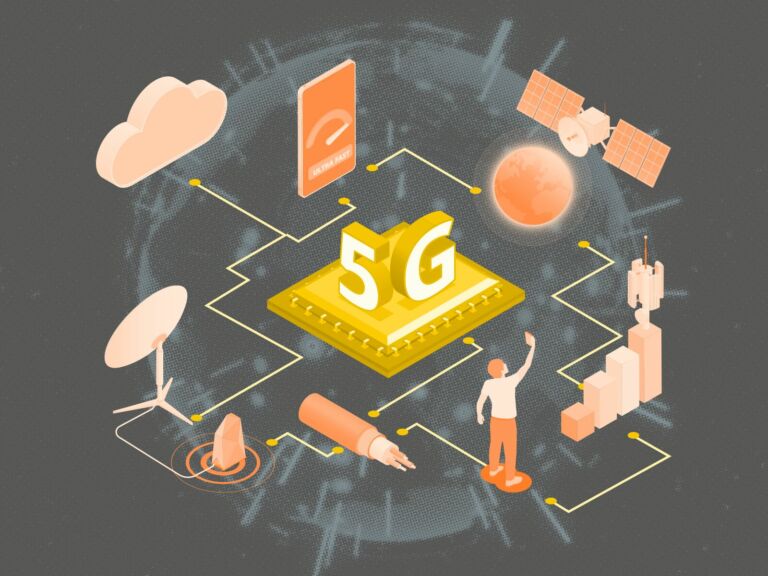
By Telia Company – May 15, 2024
Collected at : https://www.iotforall.com/real-world-examples-of-how-5g-is-reshaping-iot
In the world of technology and connectivity, 5G stands out, specifically when it comes to IoT. 3GPP — the organization that brings order and standards to global cellular telecommunications — built 5G with IoT in mind.
This new generation is about creating a more connected and secure IoT ecosystem for the future. It’s about providing more reliable connections and increasing capacity for more connected devices and more data at higher speeds. This is all crucial for the growing IoT space.
5G is already reshaping the IoT landscape. We see use cases tested and developed currently. And we’ll see even more of them as the 5G evolution brings new capabilities and improved connectivity.
The Continuing Evolution of 5G Capabilities
To understand the impact of 5G on IoT, it’s important to understand the technology’s evolutionary journey and the difference between standalone (SA) and non-standalone (NSA) deployment. The truth is that 5G isn’t a single transformation of cellular networks. It continues to change and evolve, delivering even more speed, capacity, and functionality.
The fifth generation of cellular connectivity builds on previous technologies—sometimes literally. NSA 5G relies on existing 4G infrastructure and provides benefits like superfast speeds and increased capacity.
5G SA, on the other hand, operates independently of the 4G infrastructure, with a new core, unlocking new functionalities like ultra-low latency and network slicing. These capabilities support more critical IoT applications.
How 5G Is Transforming IoT: 3 Powerful Benefits
Operators are already implementing the first 3GPP releases of 5G—and in the coming years, we will see more capabilities in three key areas:
1. Unprecedented Speed and Bandwidth
At the heart of 5G’s impact on IoT lies its supreme speed and bandwidth capabilities, including data that transmits at speeds up to 100 times faster than 4G.
With potential speeds of 1-20 Gbps, 5G networks enable real-time communication and processing for vast amounts of data. IoT devices can operate more efficiently, deliver richer experiences, and support a wider range of applications, from immersive augmented reality to high-definition video streaming.
That kind of data capacity creates new possibilities for business users. In Finland, an early 5G project took advantage of these eMBB capabilities to bring augmented reality to a leading wood mill. With virtual models of process machines displayed in AR—and in real-time—the mill can boost maintenance efficiency to eliminate costly downtime.
2. Redefining Connectivity With Ultra-Low Latency and Reliability
One of the most significant advantages of 5G for IoT is its ultra-low latency or the time it takes for data to travel between devices. 5G offers near-instantaneous response times, making it ideal for applications that require real-time interaction, such as autonomous vehicles, industrial automation, and remote surgery. By minimizing latency, 5G empowers IoT devices to make split-second decisions, enhancing safety, reliability, and efficiency.
For example in Norway, tests on 5G with self-driving ferries are making strides toward autonomous sea travel. The vehicle analyzes data to navigate, avoiding obstacles, while also measuring the distance to the quay for safe mooring of the boat.
3. Reliably Connecting Massive Numbers of Devices
Another key feature of 5G is its ability to support massive Machine Type Communication (mMTC), allowing networks to connect a vast number of devices simultaneously. This is particularly good for IoT deployments, where millions of sensors and smart devices must communicate seamlessly, unlocking new possibilities for massive data-driven insights and automation.
We are already seeing this in Sweden, where over two million smart meters connect across the country and utility providers can take advantage of massive IoT. While the meters connect to NB-IoT, which will continue to develop within the 5G family, this example shows the capability of large-scale, energy-efficient IoT solutions, even in hard-to-reach places.
Fueling Innovation Across Industries
The transformative impact of 5G on IoT extends far beyond technical capabilities. It is also a catalyst for innovation and disruption across industries. We are seeing examples today from healthcare to agriculture and manufacturing. 5G-enabled IoT solutions drive new business models, enhance customer experiences, and unlock new revenue streams.
In Sweden and Finland, innovative 5G core networks are allowing leading industrial companies to explore the latest 5G capabilities. For example, 5G transport corridors for self-driving vehicles will help change the future of transport services in Sweden.
In Norway, 5G network slicing separates mobile traffic from other traffic in the national 5G network for the Norwegian Armed Forces.
Seizing Opportunities With 5G and IoT
There are endless possibilities for 5G IoT. However, success takes collaboration and innovation. It requires working with customers in the real world and with real cases. That will be how we develop the IoT ecosystem.
Excited about the possibilities suggested by these examples? It’s not too early to start planning your own 5G IoT project.
But before jumping headfirst into 5G deployment, take the time to clearly define your IoT use case and objectives. What problem are you trying to solve? What value are you seeking to create for your customers?
From there, you can decide what technology will fit your IoT needs best.
LTE will live alongside 5G for a long time. Great IoT connectivity capabilities with cellular NB-IoT and LTE-M cater to the demands for less battery power consumption and better penetration, as well as for connecting massive numbers of IoT devices in a dedicated spectrum.
If applications need high-speed data and capacities up to 1 Gbps, devices are becoming available. Several IoT solutions continue to develop.
But the best advice for anyone starting a 5G journey is to contact your local connectivity provider. This trusted partner can guide you into the “future of IoT” that’s already here.

Leave a Reply